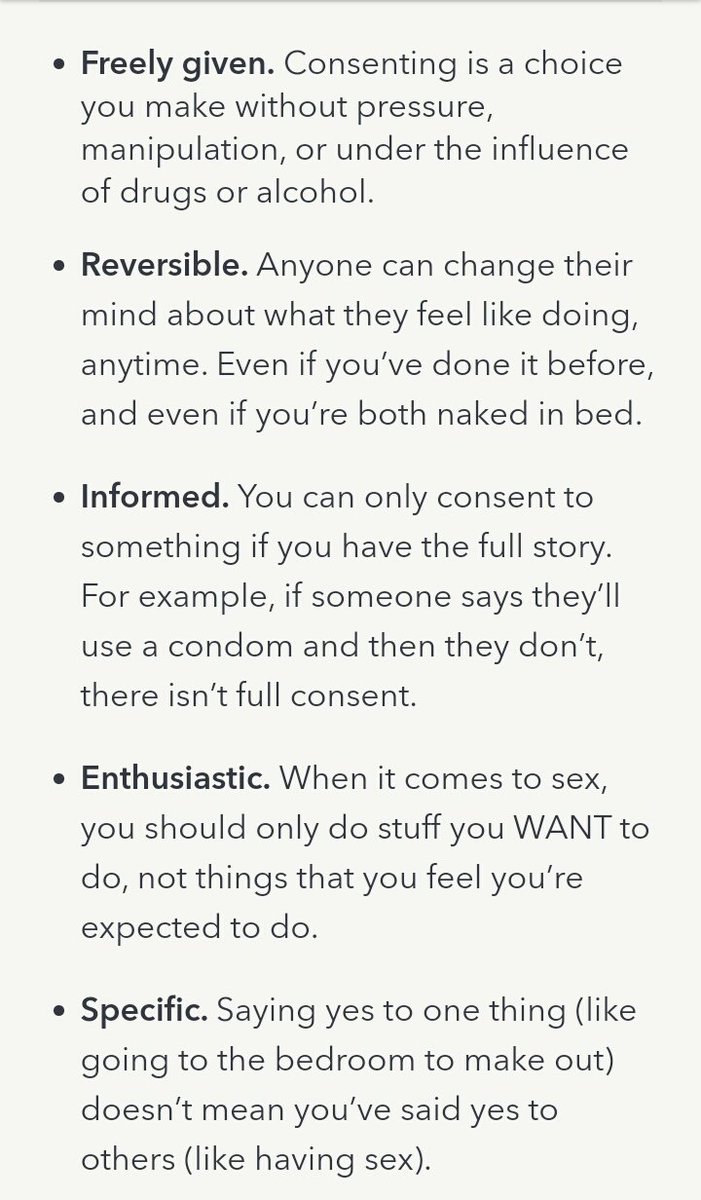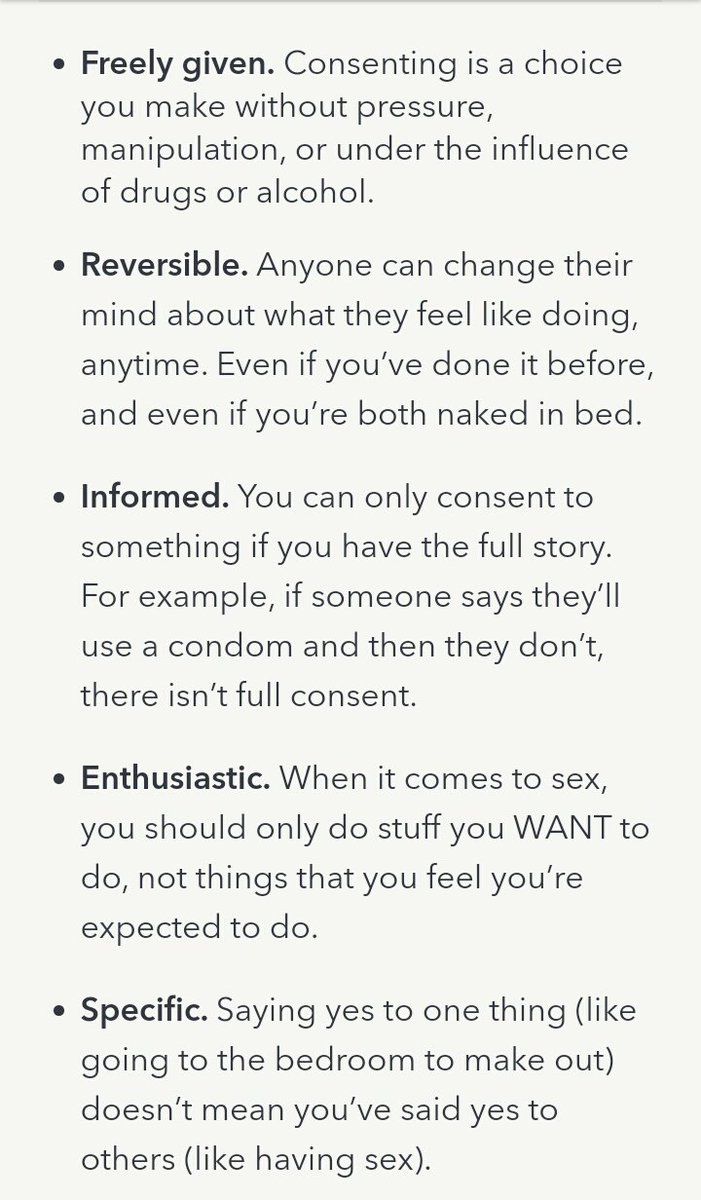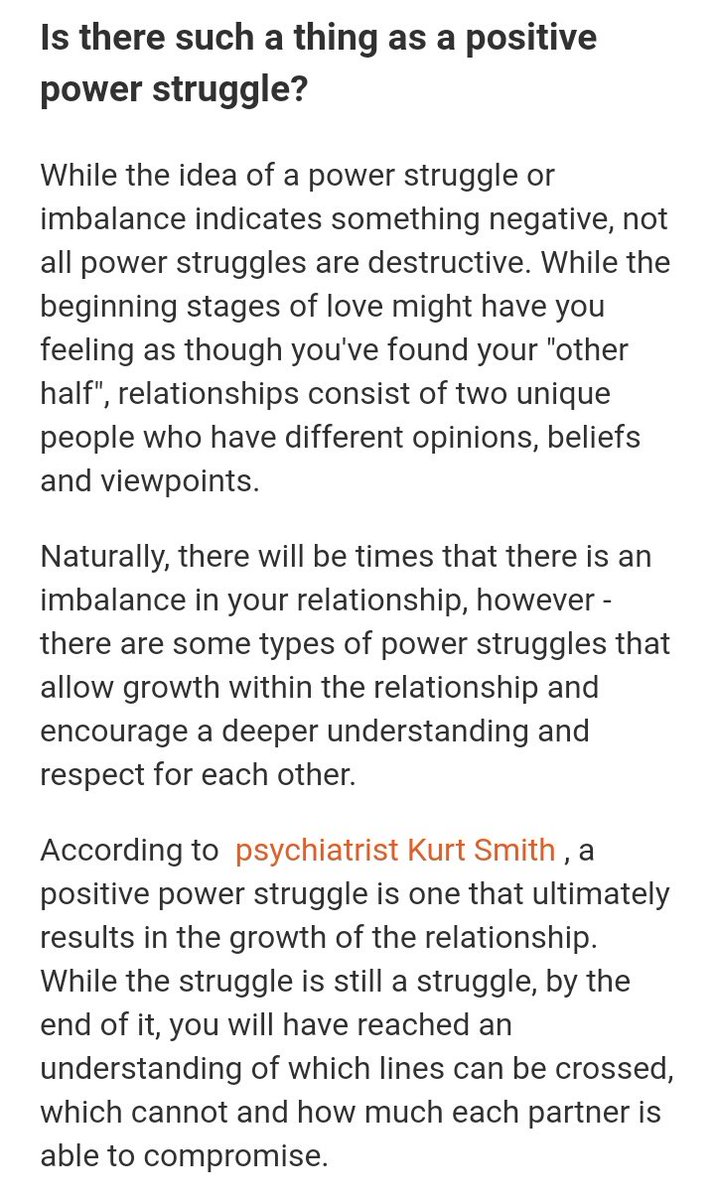RAINN has a rather serviceable model for sexual consent for humans:
https://t.co/0gelDI53Fa And Planned Parenthood has a more comprehensive one:
https://t.co/8QQ1GsyGGT https://t.co/PQKkYcpftl What's interesting is that both models fit and can be successfully applied to...
nonhuman animals regardless of if their prospective partners are of the same species or not.
https://t.co/wrE2jLPWHp Now we need to explore power imbalance in human sexual relationships to understand what degrees of power imbalance are tolerated or not, and why.
We must also note that "Power Imbalance" does not inherently mean bad things. There are Negative or Harmful Power Imbalances (like when the powerful have complete control over vital resources and the powerless are aware of this) and there are Positive or Growth Power Imbalances
(Like when one is an expert martial artist and teaches their SO how to defend themselves).
Power exists in all relationships. Having power means to have a sense of control, to have choices and the ability to influence our environment and others.
https://t.co/Jd7cLPXRx1
Here we see that power differentials seem to revolve around uniquely human social-psychological concepts like peer pressure, expectations, and concerns about social image. If you look into the literature on power dynamics, you find very little of the same harmful power
differentials that can be applied to nonhumans. However much of the positive aspects that are associated with beneficial power differences and power equality can be found in interspecies relations.
So what power do humans have over animals?
That depends on many factors like the specific animal, human, living situation, personal histories, ect. But generally we can agree that humans often have superior, specific types of intelligence like pattern recognition and meta cognition. Humans also have more political power,
social power (in human societies), and financial power. All of these can create moral issues between two humans if the gaps are big enough, so obviously they must similarly be issues with interspecies relations, right? No, actually. First, we have to ask why these imbalances are
problematic in the first place? Because we tolerate plenty of imbalances like physical strength gaps between partners, financial gaps, and extreme age gaps so long as both are legal adults. A strength imbalance should be a more immediate worry than an intelligence imbalance
seeing as the ability to physically pin and restrain someone offers little recourse unless the victim is a trained combatant. So the imbalances of power that we care about seem to be about the likelihood of harm being produced, not just the mere existence of possible harm.
What is the animal under pressure from? What pressures are specifically involved? Here are a couple of possible answers:
1) Survival Dependency. This argument states that since domesticated animals, like dependent humans, cannot survive on their own and require a human caretaker
to live, the pressures to conform to the caretaker's wishes or desires are intrinsically linked to their survival which affects the decisions of the dependent whether these pressures are used overtly or exist subtly.
This argument loses the battle on 2 fronts. 1st is that
domesticated animals are entirely capable of surviving on their own (80% of all dogs are feral, look at wild horses, pigs that become so successful as invasive species from escaping farms, ect.) So they are not necessarily dependent on a human caretaker for survival, nor would
they understand that they are dependent on a human caretaker if this were the case which is the second failure of this argument. It anthropomorphizes animals to have a human typical psychological reasoning of the situation where no evidence exists to support this notion. Animals
can't know they need humans to live, hence why they still gather resources and look for food on their own, so there's not a pressure in this area.
2) Trained Sex. The animal is put under pressure by training or conditioning, the promise of reward or punishment if they do or
don't have sex.
This argument has merit only in the cases of punishment for the animal's refusal (or solicitation of it, as many pet owners punish animals for exhibiting sexual behaviour) to sex, which is abuse by definition and no zoosexual I know of condones this nor do the
ones studied by Miletski, Dr. Beetz, and Williams and Weinberg.
However, and as uncomfortable as I personally am about training for sex, I see no inherent wrong so long as both the methods don't infringe on animal welfare and the sex acts don't either.
(Veterinarian, Ethologist, and Animal Ethics PhD Stine B Christiansen convinced me of this:
https://t.co/TCcWstax7h ) For instance if a dog consumes too much peanut butter and becomes sick, that's a welfare issue regardless of if it was spread on genitals, hands, or the ground.
Or if the animal is trained to do something like tolerate uncomfortable or painful objects being inserted into them (unless they are necessary medical instruments), then that would be a welfare issue. Yet much like the Danish Animal Ethics and Veterinary councils point out,
rewarding an animal for engaging in a harmless activity is not itself a welfare violation. Although most zoosexuals claim that no training is necessary since sex is intrinsically rewarding, and veterinary and animal expert observations corroborate on this.
I'll address the intelligence gap, seeing as that is likely the go to justification you're thinking of for prohibiting bestiality. So why do animals need the same level of certain cognitive abilities as a specific species of ape? What is that supposed to accomplish,
what's the goal for sexual consent in having those capabilities? The best answer to these questions are: "Because it allows the subject to weigh the potential consequences of the interaction against what they value or care about. If the consequences are undesirable and infringe
on their values, they can be aware of that and refuse the interaction." But animals already do this when choosing mates of their own species. The intelligence difference is only a factor when it is used to take advantage of *treat unfairly for personal gain* the less capable
partner, remembering that sex is not inherently unfair or harmful. If you commit that this gap is intrinsically harmful to sexual interactions, there needs to be a cut off point for each gap in each different type of intelligence, and justifications for why that gap size is
chosen over another gap size. Like if we prohibit humans from having sexual interactions with Japanese Macaques, why not also prohibit Japanese Macaques from having sexual interactions with Sika Deer? Or prohibit cats and rabbits from mounting?
Or all of the other numerous cases of interspecies sex? And why not prohibit different dog breeds with vast gaps in their intelligences like border collies and bulldogs from having sex?
Your concept of power imbalance also applies in veterinary practices like stimulating female animals when artificially inseminating them. Or is it okay because those humans aren't sexually stimulating animals to orgasm for (human and animal) pleasure?
As Antonio M. Haynes (who received a B.A., magna cum laude, from the University of Rochester and a J.D., magna cum laude, Order of the Coif, from Cornell Law School) points out, uneven power dynamics exist in every relationship.
https://t.co/idS6GcqNRu
There is a difference between human social power and standing, which humans care about and which affect them deeply, and power as a broader dynamic. No relationships would ever be permissible if we required power to be even since power is always uneven between two individuals in
at least several ways.
Also, healthy relationships don't focus on nor care about power, ask any psychologist. Power in relationships are what narcissists, abusers, and psychopaths care about. Otherwise the consequences of certain relationships is what deems them permissible.
Here are some in depth resources on the ethics of sexuality. I've taken screen shots of the most relevant points, but feel free to familiarize yourself with whatever is in here.
https://t.co/0OlKsT7fPR.
https://t.co/odeCqGhVi2
Here is an excellent article on how respecting an animal's autonomy and right to consent or say no leads to a healthier and happier organism. There is not a justifiable reason sex should be any different.
https://t.co/JggooihOKf
And here is a wonderful article discussing equine consent that focuses on offering choices, respecting "no", and being mindful of the wants and needs of each organism, and not arbitrarily using someone's "want" to trample the other's "want."
https://t.co/xMS2b9FarP







